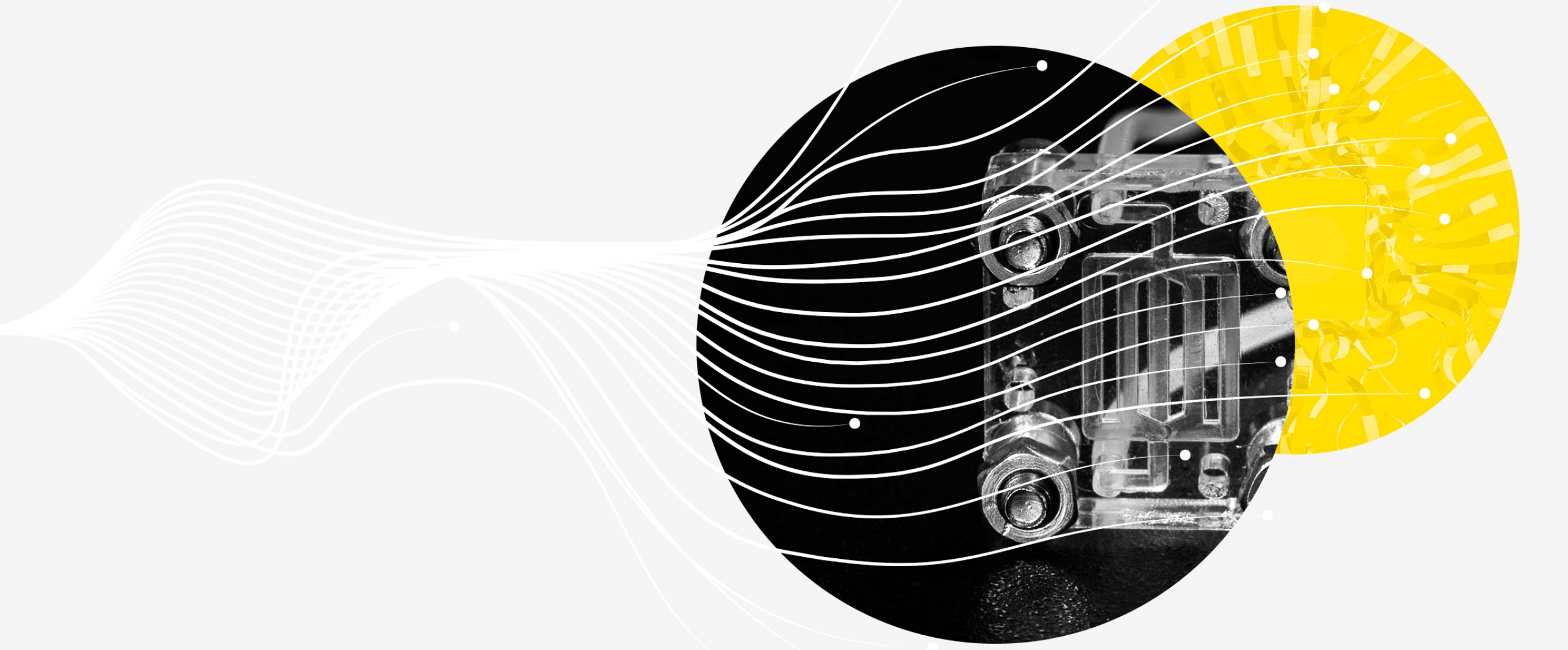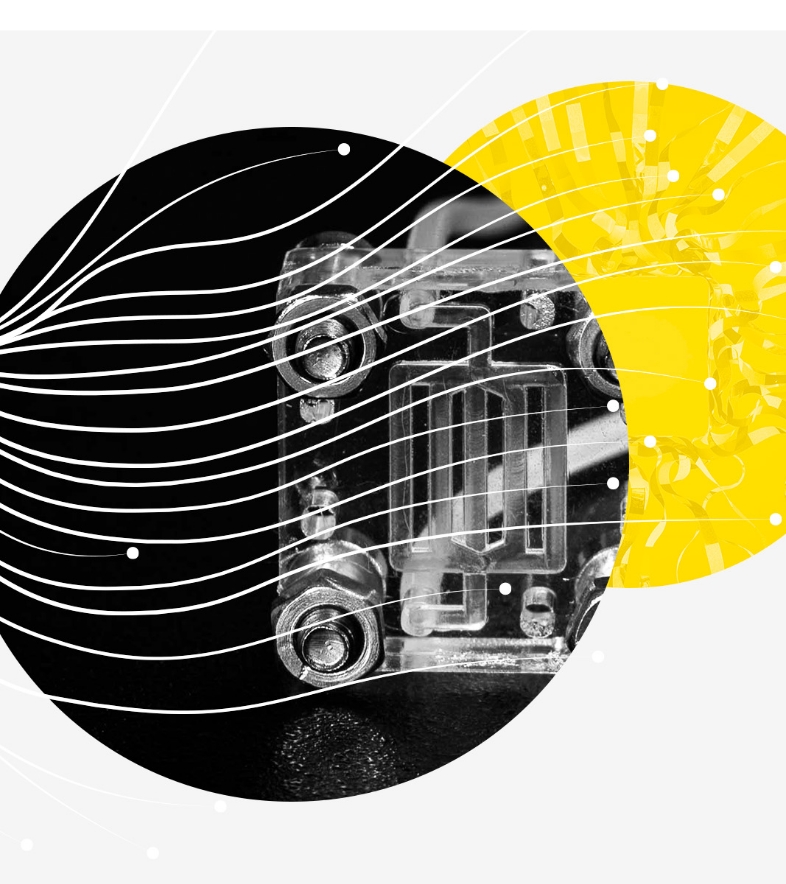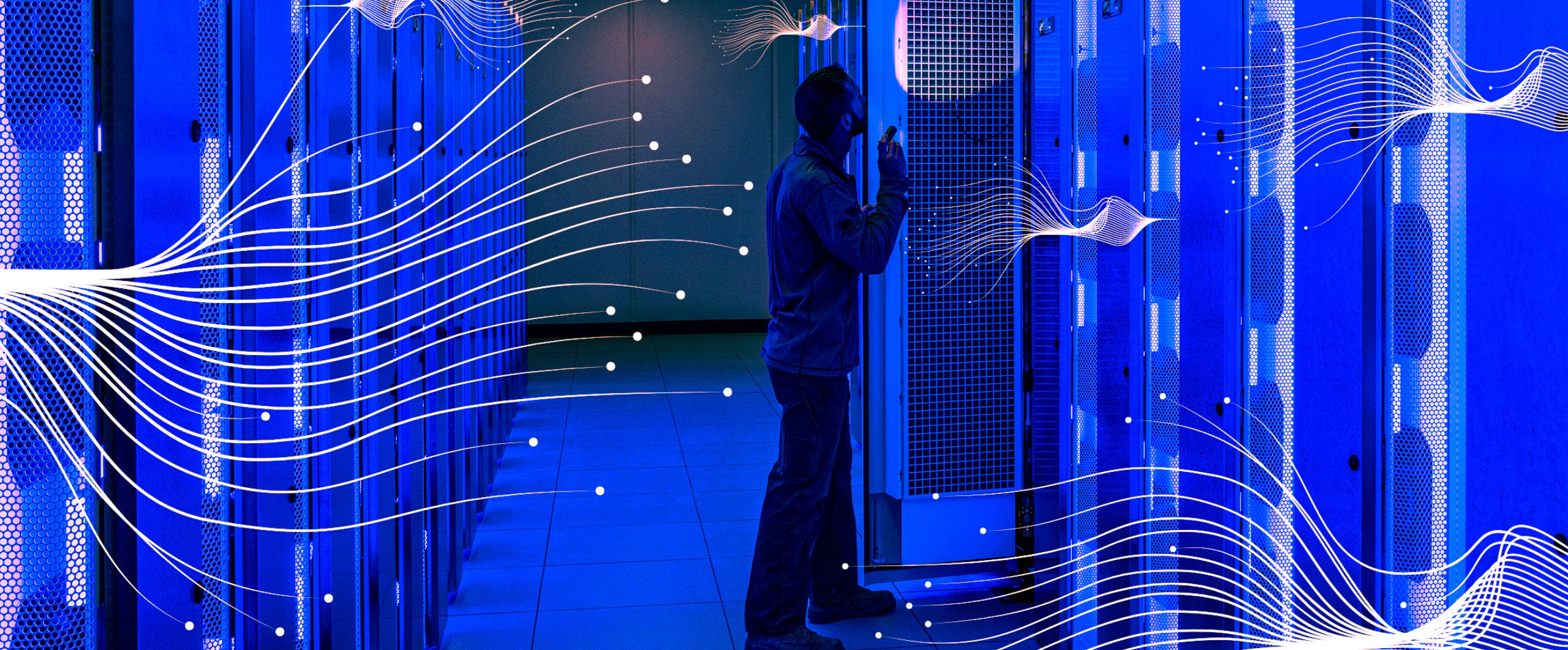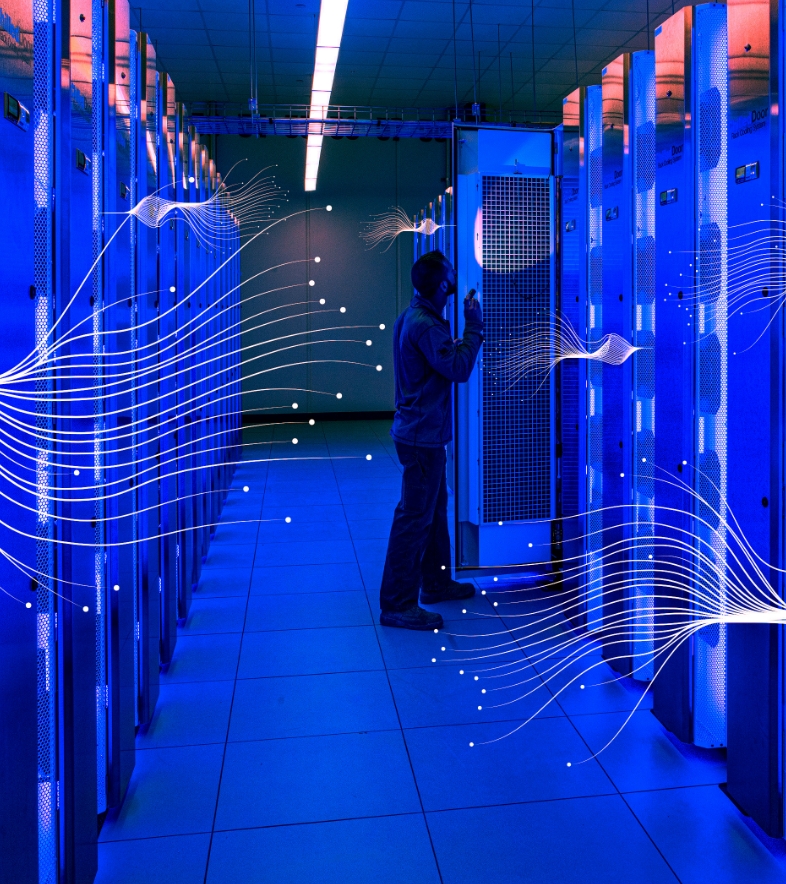
As part of an ongoing series, we recently sat down with members of Flad's science and technology team to discuss the future of the scientific workplace.
The Hypothesis:
conversations on scientific
research environments
Labs as Data Engines, Miniaturization, Theranostics, and Real-time Medicine Fulfillment
As part of an ongoing series, we recently sat down with members of Flad's science and technology team to discuss the future of the scientific workplace.

Paul Hansen
AIA, LEED AP
PrincipalPaul's years of managing research facilities have given him unique insights into the questions asked by
clients and their probable motivations – the questions behind the questions. Understanding their methods,
he can find the ways in which their approach and the approach of the design team align. A project leader
and client advocate with extensive experience on both sides of the fence, he's a calming influence –
listening, providing counsel, and delineating solutions that enable business, helping advance conversations
to positive outcomes.
Q: What are some of the challenges and technologies that scientific organizations are talking about?A: With remote work, I think we're living in a world where we're not going to return to what we used to think was normal. The definition of the new normal will vary by organization and its business focus.
During the pandemic a number of biopharma clients shared that research staff remained on-site to support lab research activities. Correspondingly, other organizations shared that they allowed researchers focused on the development of combination products such as medical devices, which typically occur in dry or electronics lab environments, to work remotely and connect virtually with colleagues.
In terms of emerging technologies, one rapidly evolving technological platform is the growth and use of connected analytical equipment arrays focused on the digitalization of research with the goal of leveraging machine learning (ML) to accelerate drug discovery.
For example, companies such as Strateos have reimagined the laboratory as a smart data generation center using high-throughput lab (HTL) automation. Connected analytical equipment arrays to support this research digitalization are now being incorporated into traditional labs environments. The need to incorporate in-facility data centers to support the data generated is often requested to support labs as data engines.
Building on the construct of HTL analytical arrays, computational biology and bioinformatics is another advancing disruptive technology. This has resulted in the ability to rapidly generate testable hypotheses at a faster rate than we can test those hypotheses in the laboratory. Projects like the Department of Energy's (DOE) KBase and others are integrating masses of data in environments that can support comparative analysis, hypothesis generation, and model formulation and testing, virtually. These technologies also leverage the use of microfluidics involving tiny amounts of fluid – only tens of micrometers across.
The premise is to advance the miniaturization of this technology via microfluidics, or a ‘lab-on-a-chip' (LOC), and automate them via advanced control and machine learning the scientific protocols of most importance.
Per the DOE, "These advancements, when taken together, hint at the possibility of a revolution in biological science if we can overcome the latency of traditional approaches to wet lab experimentation. Inspired by the example of the DOE nanoscience centers, the idea is to develop a network of HTL labs, each focused on a complementary set of protocols and technologies needed by the systems and synthetic biology communities."
Machine learning to enable research is a rapidly expanding focus of academia. For example, Carnegie Mellon University, in conjunction with Emerald Cloud Lab, is building a remote-controlled lab that will allow for all aspects of daily lab work to be fully operated remotely.
In the context of drug discovery, additional technology areas that pique my interest are artificial intelligence (AI) and machine learning information technology applications. These applications are rapidly expanding in use by corporate research, academia, and other organizations. This has resulted in research organizations establishing dedicated AI/ML core teams whose focus is advancing the speed to market of life sciences discovery and development. For example, companies like BenevolentAI have built an AI-enabled drug discovery platform, which is revolutionizing drug discovery speed to market.
It's also worth noting theranostics, which is a combination of the words therapeutics and diagnostics. In the field of medicine, theranostics involves drugs and/or techniques that are uniquely combined to diagnose and treat medical conditions simultaneously or sequentially. For cancer research and prevention, radioisotopes and/or viruses are engineered to attack cancer cells and stimulate the patient's immune response. Globally, the theranostics market is estimated to increase from $96.7M this year to $172M by 2028, a projected annual growth rate of 12.2% over the next five years.

One rapidly evolving technological platform is the growth and use of connected analytical equipment arrays focused on the digitalization of research.


Q: What do you think a lab will look like in the next 10 or 20 years?A: I believe the convergence of current and emergent scientific equipment instrumentation and the digital transformation of science will influence and reframe traditional lab and drug manufacture environments. Moreover, the incentives associated with accelerated drug candidate development and manufacture that will be fueled by digitalization will disrupt traditional real estate/facility organizational/functional constructs. Further, I don't envision a future horizon where conventional in-vivo lab environments are no longer required. In contrast to the research facilities of today, where we see broad swaths of labs that are focused on discovery and development, research facilities of the future may consist of physical or virtual data modeling functions combined with discrete core labs, including both specialized (e.g., imaging, next-generation sequencing, etc.) and more conventional, complementary research lab cores including biology, chemistry, genomics, and physical materials analysis/characterization.
Lastly, while I'm on this scientific workplace of the future theme, advances in digital and LOC technologies present the possibility of bringing a miniaturized, multi-modality research instrument to the user via a desktop microisolator. Predominantly, if tomorrow's labs are data engines where both clinical and analytical data are accessed via an open-source cloud platform and paired with LOC instrumentation, it suggests that scientific discovery, as primarily a virtual activity, may be agnostic to environment and location.

Research facilities of the future may consist of physical or virtual data modeling functions combined with discrete core labs, including both specialized and more conventional, complementary research lab cores.


Q: How would that impact lab use and the planning and programming for labs?
A: The promise of virtual labs suggests operational benefits attributed to a reduction in physical lab space or a facility degrowth strategy. Potentially, this suggests operational savings attributed to energy consumption, overhead and maintenance, and asset depreciation.

Q: What are some future applications of the things you’ve described?
A: The range of systems and approaches that can be used to deliver medicines is growing and advancing at an incredible rate. Coupled with the rapid growth in bioinformatics and technology, it suggests the future is being created now. Future applications present what-if opportunities for just-in-time, on-demand fulfillment of medications.
Today, due to the advancement of technology, 3D-printed organs have become a reality. The next big hurdle is the implantation of bio-printed organs into humans. Similarly, is it possible to see similar clinical-care disruption to compounding pharmacies that custom-make medicines? Informed by telemedicine, imagine a time in the future where personalized custom-made medicines are dispensed to the patient via direct dispensing – a vending machine.
Share your thoughts or questions on these topics or others you'd like to hear our experts address. Email us 